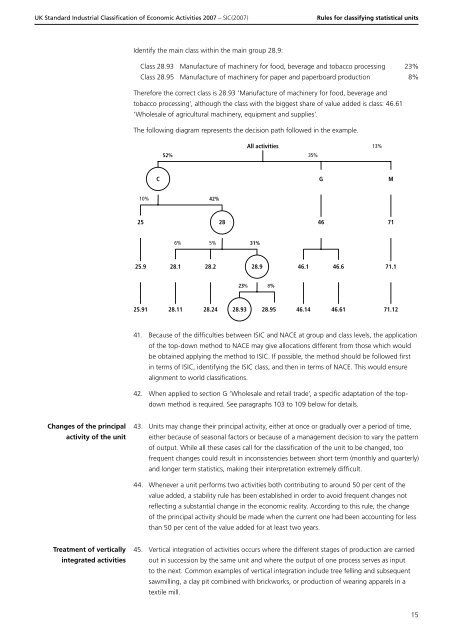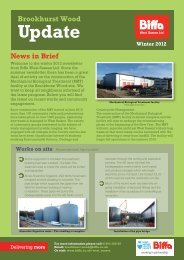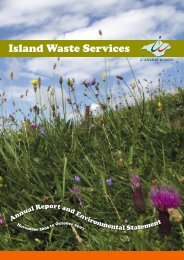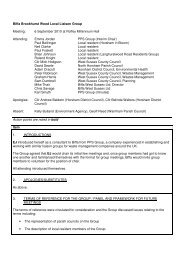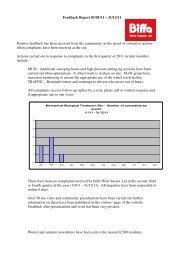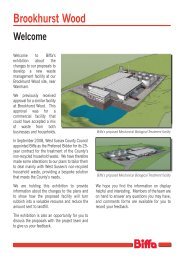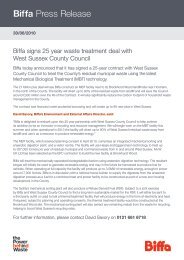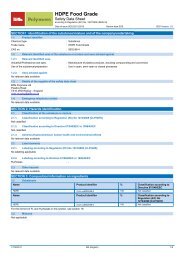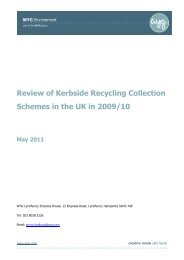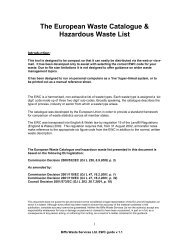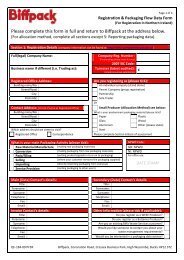detailed explanation for each SIC code - Biffa
detailed explanation for each SIC code - Biffa
detailed explanation for each SIC code - Biffa
Create successful ePaper yourself
Turn your PDF publications into a flip-book with our unique Google optimized e-Paper software.
UK Standard Industrial Classification of Economic Activities 2007 – <strong>SIC</strong>(2007)<br />
Rules <strong>for</strong> classifying statistical units<br />
Identify the main class within the main group 28.9:<br />
Class 28.93 Manufacture of machinery <strong>for</strong> food, beverage and tobacco processing 23%<br />
Class 28.95 Manufacture of machinery <strong>for</strong> paper and paperboard production 8%<br />
There<strong>for</strong>e the correct class is 28.93 ‘Manufacture of machinery <strong>for</strong> food, beverage and<br />
tobacco processing’, although the class with the biggest share of value added is class: 46.61<br />
‘Wholesale of agricultural machinery, equipment and supplies’.<br />
The following diagram represents the decision path followed in the example.<br />
All activities<br />
52% 35%<br />
13%<br />
C G M<br />
10%<br />
42%<br />
25 28<br />
46 71<br />
6%<br />
5%<br />
31%<br />
25.9 28.1 28.2 28.9<br />
46.1 46.6 71.1<br />
23%<br />
8%<br />
25.91 28.11 28.24 28.93 28.95<br />
46.14 46.61 71.12<br />
41. Because of the difficulties between I<strong>SIC</strong> and NACE at group and class levels, the application<br />
of the top-down method to NACE may give allocations different from those which would<br />
be obtained applying the method to I<strong>SIC</strong>. If possible, the method should be followed first<br />
in terms of I<strong>SIC</strong>, identifying the I<strong>SIC</strong> class, and then in terms of NACE. This would ensure<br />
alignment to world classifications.<br />
42. When applied to section G ‘Wholesale and retail trade’, a specific adaptation of the topdown<br />
method is required. See paragraphs 103 to 109 below <strong>for</strong> details.<br />
Changes of the principal<br />
activity of the unit<br />
43. Units may change their principal activity, either at once or gradually over a period of time,<br />
either because of seasonal factors or because of a management decision to vary the pattern<br />
of output. While all these cases call <strong>for</strong> the classification of the unit to be changed, too<br />
frequent changes could result in inconsistencies between short term (monthly and quarterly)<br />
and longer term statistics, making their interpretation extremely difficult.<br />
44. Whenever a unit per<strong>for</strong>ms two activities both contributing to around 50 per cent of the<br />
value added, a stability rule has been established in order to avoid frequent changes not<br />
reflecting a substantial change in the economic reality. According to this rule, the change<br />
of the principal activity should be made when the current one had been accounting <strong>for</strong> less<br />
than 50 per cent of the value added <strong>for</strong> at least two years.<br />
Treatment of vertically<br />
integrated activities<br />
45. Vertical integration of activities occurs where the different stages of production are carried<br />
out in succession by the same unit and where the output of one process serves as input<br />
to the next. Common examples of vertical integration include tree felling and subsequent<br />
sawmilling, a clay pit combined with brickworks, or production of wearing apparels in a<br />
textile mill.<br />
15


